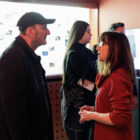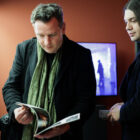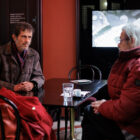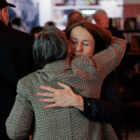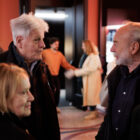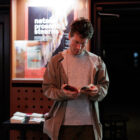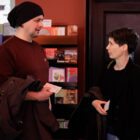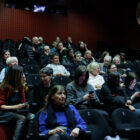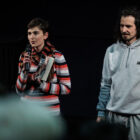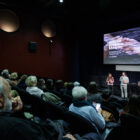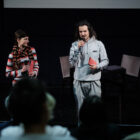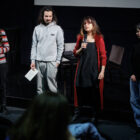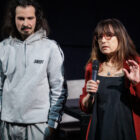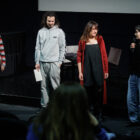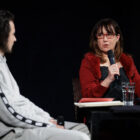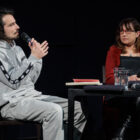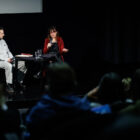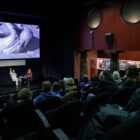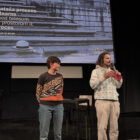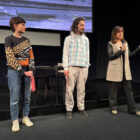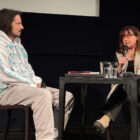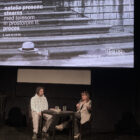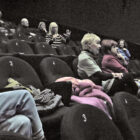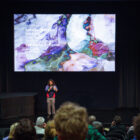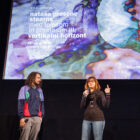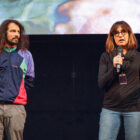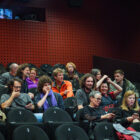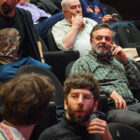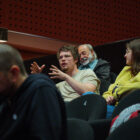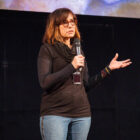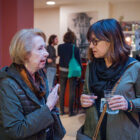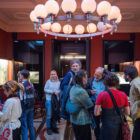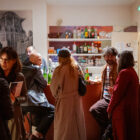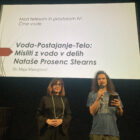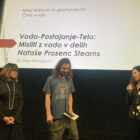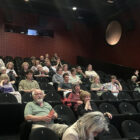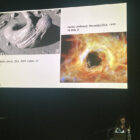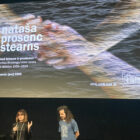Screening of film/video oeuvre 1989–2024
Screenings and talks
Friday, 21 March 2025, 7 pm
Slovenian Cinematheque, Miklošičeva cesta 28, Ljubljana
Programme at Slovenian Cinematheque and Slovenian Film Database (March-June 2025)
21 March / 1 April / 17 May / 3 June
Production: SCCA-Ljubljana and Slovenian Cinematheque
Curators: Vesna Bukovec, Robert Kuret
Programme booklet (in Slovene, pdf)
- About the programme
- Between Body and Space I: Vortex, 21 March
- Between Body and Space II: Process, 1 April
- Between Body and Space III: Vertical Horizon (V-F-X Ljubljana), 17 May
- Between Body and Space IV: Black Waters, 3 June
- Biography
- Photogallery
- Colophone
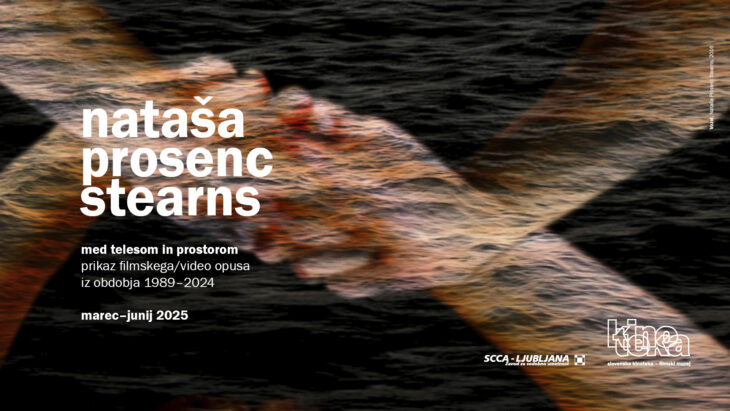
Nataša Prosenc Stearns (1966) is a filmmaker and video artist who works with a wide range of moving image production and presentation, from scriptwriting, filming and editing to spatial installations, video objects and prints. She became interested in video and film while attending the Academy of Fine Arts and Design in Ljubljana, which, just in the late 1980s, introduced a course on video aesthetics. Soon after graduating, she expanded her video work into spatial installations, and the connection between video, film and gallery work is intertwined in much of her oeuvre.
In the early 1990s, Radio Television Slovenia was one of the key platforms for young artists. Nataša Prosenc Stearns worked for several years for the show Osmi dan (Eighth Day) and Kanal A and VPK, which gave her access to various equipment. In 1997, she received a Fulbright scholarship. She went to the California Institute of the Arts, where Miha Vipotnik also studied and one of her most important mentors, the conceptual filmmaker Nancy Buchanan, worked.
At the same time, the 1990s in the US were a time when foreigners, especially if they came from the countries of the former Yugoslavia, were expected to live with images of war, Balkan exoticism and the status of a refugee who could not return, to his own country. Nataša Prosenc Stearns’s work resisted simplistic images of war, which she experienced primarily as an image conveyed by the media. Her work has never engaged in direct political engagement, which has led Holly Willis, Chair of the Media Arts Department at the California School of Cinematic Arts, to declare her an anomaly on the video art scene.
After completing her post-graduate studies, she worked with Emergent Properties in Los Angeles. Then, with her partners, she founded her own production company, Kanalya Pictures, where many of her works have been realized. She began working with American galleries and exhibited for a decade under the auspices of the Ruth Bachofner Gallery.
The presentation of Nataša Prosenc Stearns’ film and video oeuvre, entitled Between Body and Space, is a selection of her work, which includes four programmes: Vortex, Process, Vertical Horizon and Black Waters. The first two programmes are still flirting with the fictional form. At the same time, the other two are already entirely experimental, with works of radically different aesthetics, genres and production contexts within a single strand, created in different periods from the late 1980s to the present day. Her works are characterized by a focus on the body its materiality, which in later works becomes a spectral presence in the form of a silhouette filled with essential elements, with water, one of the central motifs of her oeuvre, predominating; the layering of images (multilayer), the various ways of assembling and combining them in montage programmes, the interconnection of everything living – or rather, material – into one sizeable pulsating organism marked by movement.
A moving image in Nataša Prosenc Stearns’ work often means that as if a painting, petrified in time, suddenly swells, as if it breathes air for a moment – there is no story here, just a pulse. On the other hand, one can also recognize in her work themes that necessarily evoke the fact that life is being organized into human society: alienation, all-pervading consumerism, getting lost in virtual doubles, and the barely recognizable images of war and its victims.
With this programme, we want to continue the tradition of cooperation between SCCA-Ljubljana and the Slovenian Cinematheque, in which we present key authors in the field of video (so far, Miha Vipotnik, Ema Kugler, Marko A. Kovačič in Neven Korda). Films that are otherwise available in the online archive DIVA Station are thus given a new life in a new context on the big screen. The cinema screenings will be complemented by a collaboration with the Slovenian Film Database (BSF), where it will be possible to see the remaining works by Nataša Prosenc Stearns.
Robert Kuret
Between Body and Space I: Vortex
Friday, 21 March at 7 pm
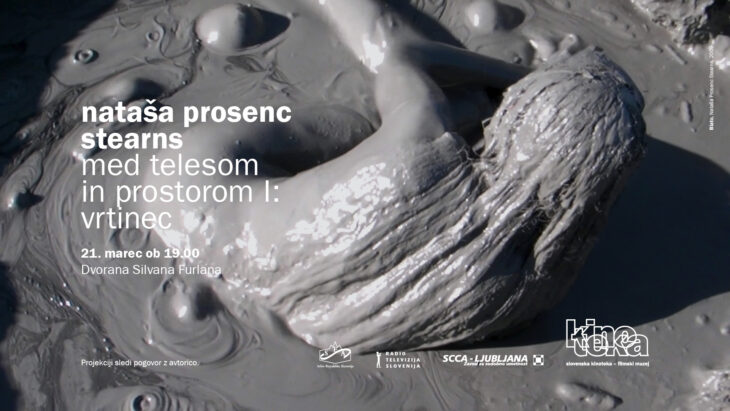
Creation. Existence. Alienation. Ritual.
The birth of the world from the cycle. A Vortex already presupposes a curvature of space that becomes a gravitational field in which something happens. A woman emerges from the Mud, more precisely a mud volcano, and Nataša Prosenc Stearns takes a picture of her in the Californian desert, offering her version of the story of the beginning: without the plan of the face, as one of the elements of nature that remain part of the landscape. The next step from mythological antiquity is the already urban post-independence modernity, where mud becomes concrete in Concrete Man: the building block of the creation of the new man, where the myth of Pygmalion and the fairy tale of Cinderella meet in the form of a silent film, telling a love story in the context of an upper-middle-class woman in post-transition Slovenia. The author explores the theme of alienation in various ways, for example, alienation in the image represented in the media, which in Evening lives its life independently of its “real bearer” and phantasmagorically intimidates her. The conclusion of the series seeks ways out of alienation and finds them in the magical, occult ritual of the sisterly Mother for Dinner and Tango for Fish.
The films were made in radically different periods and contexts: Concrete Man and Evening under the auspices of the Arsmedia production company and co-productions of RTV Slovenia in the 1990s, Tango for Fish produced by RTV Slovenia, Mud, Afterlife, Self Portrait and The Beach as independent projects in the USA in the 2000s, Vortex was part of the larger installation project Gladiators at the Venice Biennale, Construct was made from found footage of the construction site of Biosphere 2 in Arizona, the largest artificial environment facility for life on Mars, while Mother for Dinner was filmed as part of the Maribor European Capital of Culture.
The transition to the digital camera and the independent production context also meant more experimentation with the image, for example, combining lenses with mirrors to achieve a grainy effect (The Beach). During this time, the artist also developed so-called haiku videos – works such as Self Portrait and Afterlife, which were based on spontaneously recorded fragments of reality and formed in an editing process.
Robert Kuret
We thank the RTV Slovenia archive and the Slovenian Film Archive at the Archives of the Republic of Slovenia for loaning film copies.
Robert Kuret will talk with Nataša Prosenc Stearns.
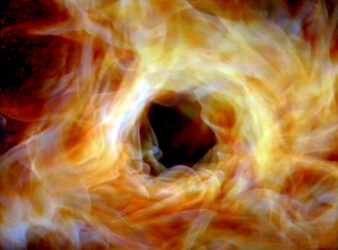
Slovenia/USA, 1999, digital format (shot on 16 mm), 3:4, color, 2′ 30” (courtesy of Modern Gallery Ljubljana)
Images of fire, earth, sand and snow, spinning and disappearing in a circular motion.
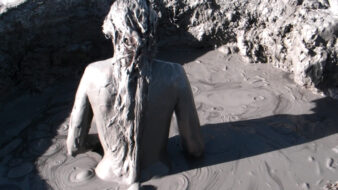
USA, 2009, digital format (shot on video), 1.78, color, 9’ 51’’
A story about the origin of life, in which a woman creates herself out of natural material.
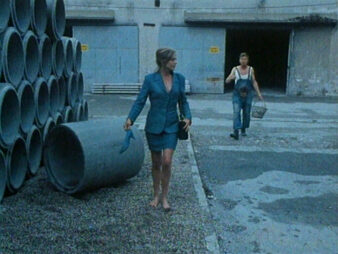
Arsmedia and TV Slovenia, Slovenia, 1995, Beta SP (shot on super 16 mm), 3:4, color, 15′ 29’’
A woman’s shoe gets stuck in fresh concrete in the middle of the city. Its owner, thrown out of her everyday fast pace, is anxious to save the situation. One by one, unexpected events cross her plans.
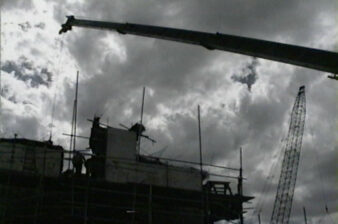
Emergent Properties, USA, 2002, digital format (shot on video), 1.37, color 12′ 30’’
Construction of the Biosphere 2 facility, where an isolated environment was created as a biological experiment.
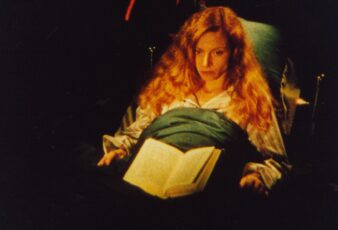
Arsmedia and TV Slovenia, Slovenia, 1999, super 16 mm, 3:4, color, 10’ 57’’
When the loneliness is overwhelming, we start imagining things.

USA, 2010, digital format (shot on HD video), 1.78, color, 2’ 50’’ (courtesy of Nancy Kaye Collection)
A static still-life over time: a bouquet of peonies wilting.
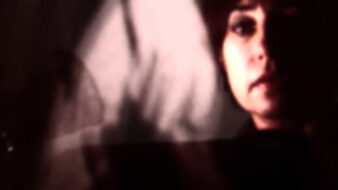
USA, 2010, digital format (shot on video), 1.78, color, 3’ 13’’
The artist portrays herself in the reflection of many glazed family photos.
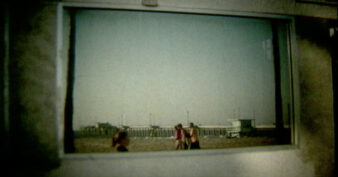
Kanalya Pictures, USA, 2004, digital format (shot on video), 1.78, color, 5’ 51’’
Daily life in the Venice Beach neighbourhood in Los Angeles. In bold colours, slightly grainy textures and blurred perspective, the artist alternates wild, chaotic scenes with calm, almost desolate shots of this vast coastline.
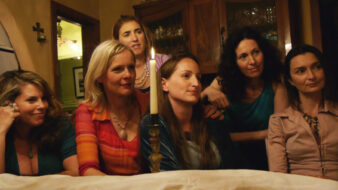
coproducec by ECC Maribor 2012, Slovenia / USA, 2012, digital format (shot on HD video), 1.78, color, 12’ 12”
A seemingly normal visit of six daughters to their mother turns into a shamanistic ritual. The story is based on a 16th-century Slovenian tale about the work of witches.
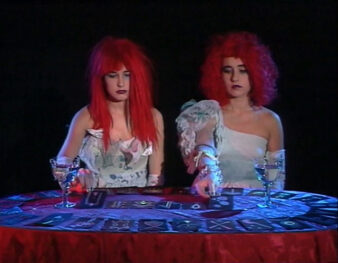
TV Slovenia, Slovenia, 1992, digital format (shot on betacam video), 1.37, color, 4’ 24’’
The eternal theme of the relationship between the sexes is depicted through doubles, accentuated by duplicated details.
Between Body and Space I: Vortex
21 – 28 March
» View at Slovenian Film Database (BSF)
The first program at the Slovenian Film Base features mainly fiction works by Nataša Prosenc Stearns but also offers a glimpse into the beginnings of her work. We start with the oldest work, You Don’t Know Me from 1989, produced by TV Sarajevo, and continue with Over There, produced by the Children and Youth Programme of RTV Slovenia, where Nataša Prosenc – as well as many other videographers – worked at the beginning of the 1990s, for example in the cultural program Osmi dan (Eighth Day). The film Morning corresponds with Evening, which will be screened at the premiere evening at the Slovenian Cinematheque, as together they form a diptych that speaks about human loneliness, once from the position of a woman (Evening), the other from the position of a man (Morning). We conclude with three feature films that Nataša Prosenc Stearns – like she did with Morning – shot in the USA, thematizing the dysfunctionality of the healthcare system (Waiting Room), the ubiquity of the market in interpersonal relations (Our Twenty Minutes), and a portrait of the dysfunctional perspective from the child’s point of view of a girl celebrating her birthday (Surprise).
Robert Kuret
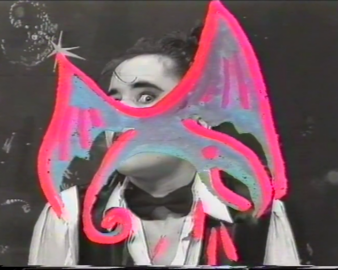
TV Sarajevo, BiH (Jugoslavia), Beta SP, 3:4, color, 1989, 4′ 56”
The dance floor with the two dancers and the woman who learns to dance in their footsteps symbolise two worlds and two generations that are at odds with each other.
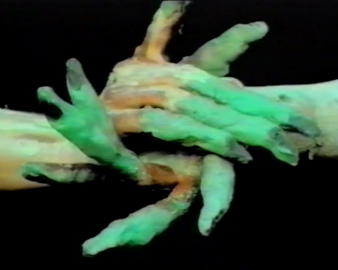
TV Slovenia, Slovenia, Beta SP, 3:4, color, 1991, 7′ 26”
This video can be viewed as a video fairy-tale: it contains all the elements of one. The happening takes place in a forest. We see a dwarf that never shows its face, but on its travels it often encounters other incredible beings.
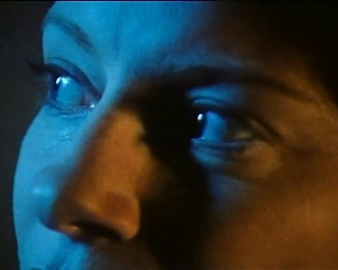
USA, Beta SP, 3:4, color, 1998, 7′ 58”
When solitude becomes too painful, we start imagining things.The film project Alone Together consists of two short films, Morning and Evening, whose stories unwind between reality and imagination.
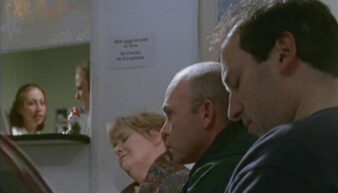
Kanalya Pictures, USA, video, 16:9, color, 2003, 10′ 20”
The atmosphere among random patients in the waiting room of their personal doctor on Christmas Eve. Ordinary patients have to wait while important business partners, celebrities and acquaintances of the doctors enter the surgery past the queue. Discontent among those waiting is escalating.
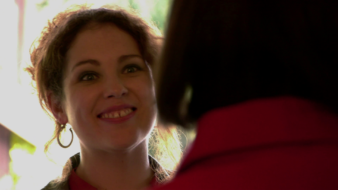
USA, HD video, 16:9, color, 2013, 7′ 40”
A couple’s privacy is invaded by a door to door sales person. Together with incoming calls and text messages, the distractions are escalating. Will they be able to savor their intimate twenty minutes?
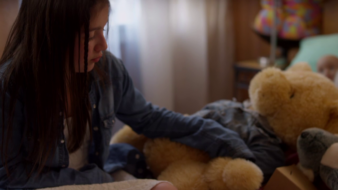
ZDA, HD video, 16:9, color, 2014, 10′ 33”
A girl copes with dysfunctional parents. Based on a short story by Lili Potpara.
Between Body and Space II: Process
Tuesday, 1 April at 7 pm
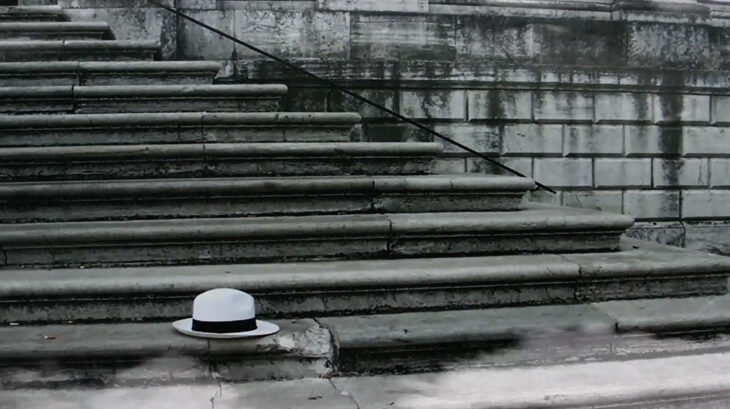
The Double and Time?, short experimental films from the 1990s, ask the question of the meaning of being. At the same time, The Trial of Socrates, an omnibus of twenty-three different authors, tries to answer the question of being as the realization of a particular ethical position.
The author’s graduation film, Time?, was conceived as a parody of the advertisements of the time, taking on the typical image of the evening news at the turn of the millennium: a clock hand counting down the last minutes until 7 pm. The film is characterized by the image of virtual space, which continues the theme of The Double and its questioning of the relationship to the time at man’s disposal: the double is not just materialized labour but the name of the mass reproduction of lives and labour that drive the social machine.
For the medium-length film The Trial of Socrates, Nataša Prosenc Stearns gathered 23 authors from all over the world by invitation and open call, to whom she sent individual parts of the script: the script was divided into smaller units. These short films form a single story of The Trial of Socrates. The principle of the directing ensemble facilitated the realization of a completely independent film produced by Kanalya Pictures, on the one hand, and articulated the journey of the spirit through its omnibus form on the other.
Socrates and those involved in his process thus become transhistorical, transgeographical, transgender, transspecies… Socrates is no longer just a person in a particular place at a specific time but becomes a spirit/ethical principle that can be in several places at once, and that interrogates the idea of distance since it is always already-here. The idea of space-time as a tremendous unified organism also corresponds with some of the ecophilosophies of the new materialism. The Trial of Socrates is – in the context of Nataša Prosenc Stearns’ oeuvre – a film that most explicitly tackles the question of the meaning of life, which being of consciousness resurrected from matter confronts.
Robert Kuret
We thank the RTV Slovenia archive for loaning film copies.
Robert Kuret will talk with Nataša Prosenc Stearns.
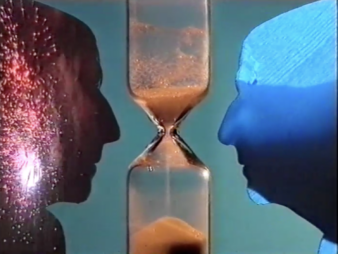
TV Slovenia, Slovenia, 1995, digital format (shot on Beta SP), 3′
The double silhouette of a person delineates two time segments: the passing of daily life, and nocturnal fireworks. Both worlds pass from one shape to another, until they finally freeze into what they actually represent: a human statue.
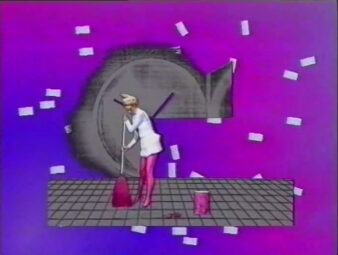
TV Slovenia, Slovenia (Yugoslavia), 1990, digital format (shot on Beta SP), 3:4, color, 1′
The repeated use of a media image gives it the status of stereotype – in this case a clock announcing the beginning of the television news. The artist wishes to undermine the ‘freezing’ of the stereotypical media image; she transforms it and thus reinstates time in its natural and constant flow.
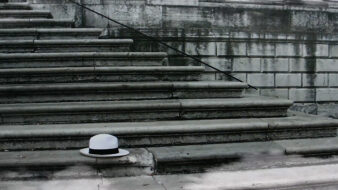
USA/Slovenia/Bulgaria/Italy/Japan/Spain/France/Chile, 1995, digital format (shot on HD video),1.78, color, 59′
An omnibus of 23 women filmmakers and videographers from different cultural backgrounds. Jasna Hribernik and Zmago Lenárdič are also participating from Slovenia. The film is an experiment in one project’s co-existence of different genres. All the films of different lengths, shot in ten countries and seven languages, are linked by the theme of Socrates’ judgment and death. Socrates, as a character, changes from a woman to a man, from an old man to a young woman and from a man to an animal in the first sentence of the verdict.
Between Body and Space II: Process
1 – 8 April
» View at Slovenian Film Database (BSF)
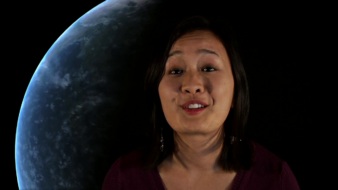
ZDA, HD video, barvni, 2021, 26′ 26” (in English)
A hundred people from different walks of life, different ages, races and sexual orientations, tell stories about what ‘Enough’ means to them, addressing our culture of consumption with huge economic and social disparities.
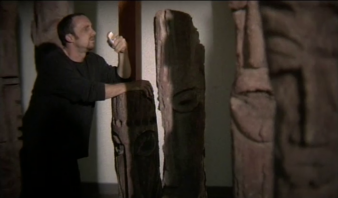
Kanalya Pictures, ZDA, HD video, 2006, 75′ 10” (in English)
A thriller about illegal trade of African art and consequences of colonialism in the west.
Between Body and Space III: Vertical Horizon
Saturady, 17 May at 7 pm
V-F-X Ljubljana
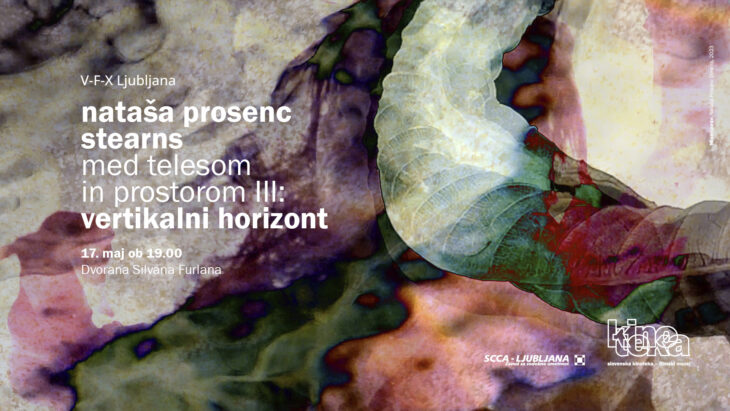
The body begins to disintegrate into parts, to merge with other bodies into indistinct masses, to dissolve into essential elements: in Crossing, the face dissolves into bubbles of water that look like pixels; in Border, the back turns into a desert; in Night Spring, the mouth disintegrates into a mound and returns to a mouth that could also be a wound… Everything is in constant flux, a logic of visual metaphor.
In the metaphor, the back becomes a desert; the mouth becomes a mound. The metaphor, then, explodes established concepts and boundaries from within and enables the metamorphosis of an object into something else, thereby establishing a particular fundamental interconnectedness of things. To continue Timothy Morton’s thought from Hyperobjects: the future and the past are already present, there is already here, the other is already me, and things, objects, and their parts are already mutating.
This series presents works that live double lives, as gallery installations and as film or video objects. Here, the artist creates her works in parallel for different media, with the dramaturgy in the installation happening through the visitor’s movement through the space. In contrast, the narrative establishes the dramaturgy in the film.
Vertical Horizon, for example, was conceived as a labyrinth with low walls in the gallery space where the screens were placed. At the same time, the film recreates the labyrinthine feeling with silhouettes in a dark space, where the camera travels along the wall in an ever-closer close-up, while we can only hear the footsteps without seeing their bearers.
The Border project has gone through various gallery incarnations, where monitors with loops of different videos have been placed on the floor to recreate the feeling of a water surface. The film achieves this fluidity through the transition of two bodies into one and the abstraction of particular body parts through extreme close-ups. In the artist’s later 2010 film Going Where, the gradation towards the close-up becomes the central formal process of abstraction, in which both the boundaries between different objects and the boundaries between the parts of that object are lost.
Robert Kuret
We thank the RTV Slovenia archive for loaning film copies. Robert Kuret will talk with Nataša Prosenc Stearns.
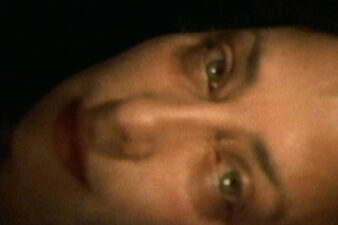
USA/Slovenia, 2005, HD video, 16:9, colour, 5′
A close-up of a face is covered with a layer of tracks of fire and water.
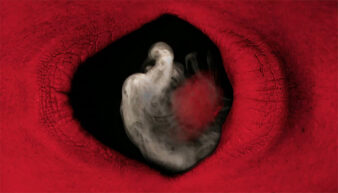
USA, 2016, HD video, 16:9, colour, 2′
The mouth turns into a volcano/crater, which in turn turns the whole body into an earth/planet.
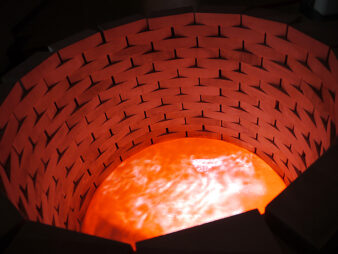
USA, 2015, HD video, 16:9, colour, 3′
Wishing Well and Night Spring are video installations that show images of the human body’s exterior and interior. They are beaming with a variety of pains and pleasures and walk the line between the real and the imaginary.
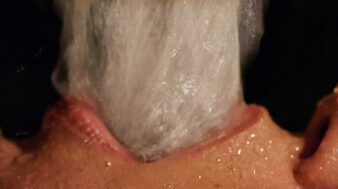
USA, 2015, HD video, 16:9, colour, 3′
Wishing Well and Night Spring are video installations that show images of the human body’s exterior and interior. They are beaming with a variety of pains and pleasures and walk the line between the real and the imaginary.
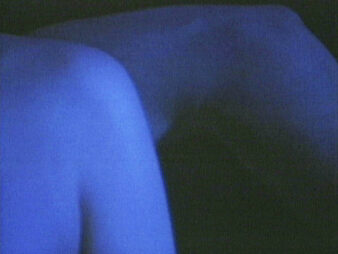
Slovenia, 1996, video Betacam, 3:4, colour, 5′
The video focuses on the concept of skin, which is the borderline between the body and its surroundings.
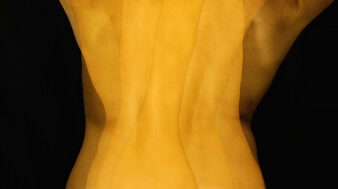
USA, 2016, HD video, 16:9, colour, 3′
Isolated from the rest of the body, several torso layers travel over the screen.
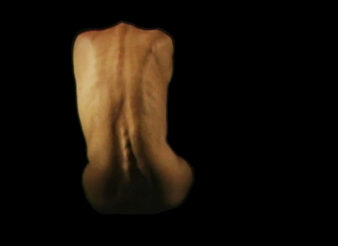
Slovenia, 1994, video Betacam, 3:4, colour, 3′
curtesy of Umetnostna galerija Maribor
The back of a butoh dancer. We observe the movement of the human body, which transforms into a moving muscular mass, suggesting skeleton and tissue, playing with the sculptural model, with the organic and holistic quality of the human body and moving into the very structure of the skin and showing the exact structure of the body as a kind of ripple.
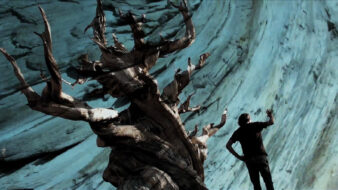
USA, 2015, HD video, 16:9, colour, 3′
Methuselah is one of the oldest living trees and grows 9800 ft above sea level in Bristlecone Pine Forrest in the Californian White Mountains. Together with other ancient pines in the forest, Methuselah survived over 4000 years. As centuries pass and the elements batter the trees, they become sculpted into astonishing shapes.
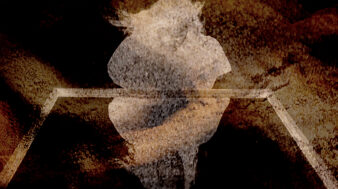
USA, 2023, HD video, 16:9, colour, 10′
In the Middle Ages, a misericorde was a weapon to put a wounded knight out of his misery. As a theological term, it refers to forgiveness and compassion. The film inhabits the dreamscape of an insomniac, moving through a land of distorted mirrors, fluctuating boundaries, and uncertain identities.
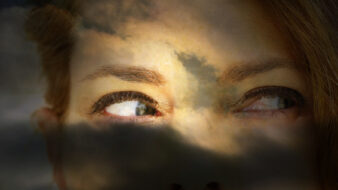
USA, 2015, HD video, 16:9, colour, 3′
A Hollywood star poses for her fans – on a red carpet of her own making.
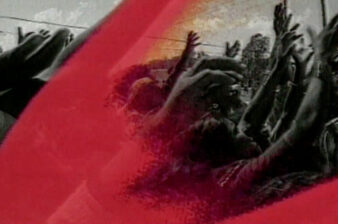
Slovenia, 1995, video Betacam, 3:4, colour, 3′
People participate in mass rituals, primarily wars and the glorification of leaders, which are constant and universal documents of the world.
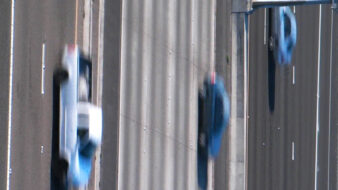
USA, 2010, HD video, 16:9, colour, 2′
The constant flow of travel.
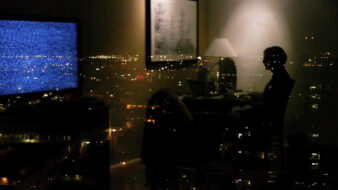
USA, 2013, HD video, 16:9, colour, 3′
In a way, the noise is produced in a physical ratio, created between intimate and public or closed and open spaces.
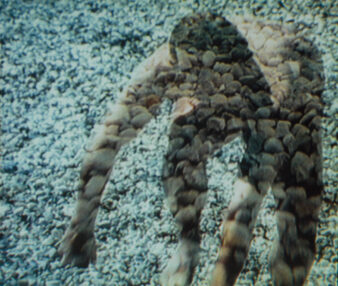
Slovenia, 1995, video Betacam, 3:4, 6′
A man and a woman aim to fulfil their desire for power, beauty, supremacy and other similar human attributes.
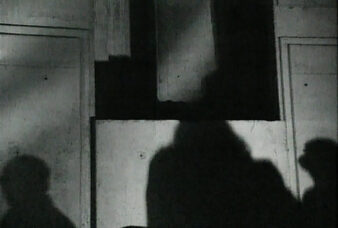
Slovenia, 1994, Betacam video, 3:4, bw, 3′
The figures never come from ‘behind the walls’ of the labyrinth; we can only hear the sound of their fleeting steps.
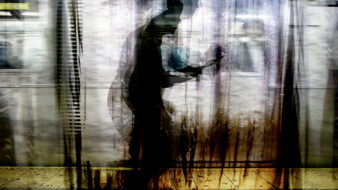
USA, 2017, HD video, 16:9, colour, 3′
The silhouette of the male figure is in the rhythm of a steady stream.
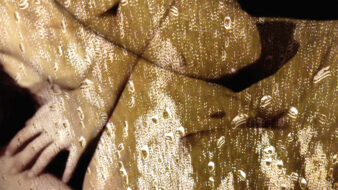
USA, 2017, HD video, 16:9, colour, 8′
The rising and ever-migrating population on a progressively more damaged and claustrophobic planet.
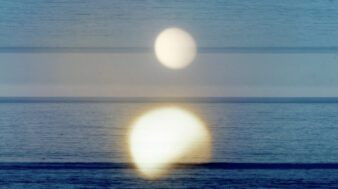
USA, 2024, HD video, 16:9, colour, 1′
Haiku video from the Horizons series.
Between Body and Space III: Vertical Horizon
17 – 24 May
» View at Slovenian Film Database (BSF)
The third programme of the review of Nataša Prosenc Stearns’ film/video oeuvre focuses on her shorter experimental works, which often live double lives, i.e., as gallery installations. In this programme, we will get an insight into the artist’s works in this field, some of which are gallery doubles for the films that will be screened at the Slovenian Cinematheque: for example, the project Big Brother’s Room, which was the source of the film Disc, or Vertical Horizon, Border, Crossing and Run City, which were the basis for the short experimental films of the same name. Thus, through the documentation of video and gallery installations, we can gain additional insight into the artist’s other field of work, from which her film works have also emerged.
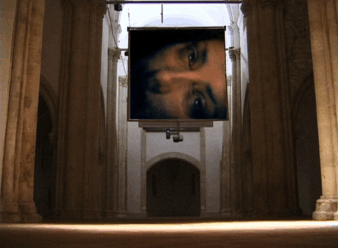
video installation, co-producer Galerija Božidar Jakac, Kostanjevica na Krki, Slovenia, Kanalya Pictures, HD Video, 16:9, colour, 2005, 1′ 55”
A multi-channel installation showing the dissolution of images by fire and water. The first part consists of pictures of a hanging human body fusing with flames. The shapes and colours of the fire and the skin merge, and soon there is no longer any difference between them. The second part shows enlarged faces with traces of fire and water spreading over their surface and sections of the installation in space.
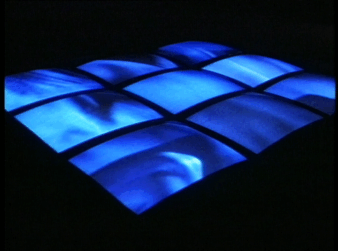
video installation, TV Slovenija, Regionalni RTV center Maribor, Slovenia; Exhibition Modra roka, Galerija Jakopič Ljubljana; Raum fur Kunst, Graz, Austria; Beta SP, 3:4, colour, 1997, 2′ 57”
Body parts begin to live their own abstract lives, for which they have freed themselves of the usual restrictions of the body.
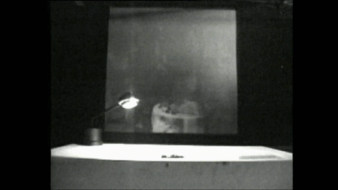
video installation, TV Slovenija, LACE, Los Angeles / Likovni salon, Celje / Galerija Škuc, Ljubljana, USA / Slovenia; BetaSP, 3:4, colour, 1996 / 1997 / 2019, 2′ 45”
Leadership, the leading of masses, is a trauma rooted in the psyche of people living in post-Communist societies. Whose marionettes are we, and how free can our decisions be? These are questions of universal significance. The images of crowds, who in the name of different ideas, gods or leaders, release their passions, are transformed into nameless masses.
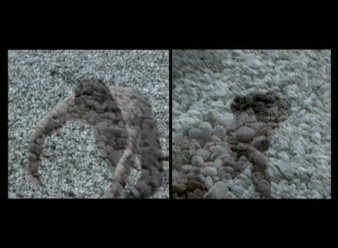
TV Slovenija, video installation in Mala galerija, Ljubljana, Razstavni salon Rotovž Maribor, Slovenia; BetaSP, 3:4, colour, 1997, 1998, 3′ 10”
A two-channel video installation depicting the story of Sisyphus.
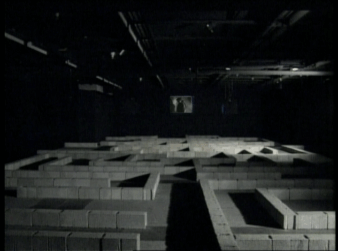
TV Slovenija, video installation, Galerija Jakopič Ljubljana, Slovenia; BetaSP, 3:4, colour, 1994, 2′ 34”
A four-channel video installation with images of people looking for a way out of a maze of concrete bricks.
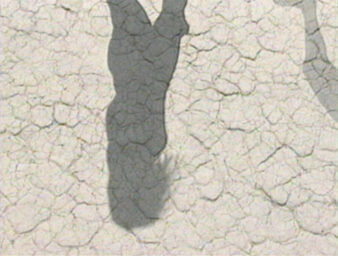
video installation, Galerija Miklova hiša, Ribnica / Gallery 825, Los Angeles / Tel Aviv Museum of Art, Slovenija / ZDA / Izrael; BetaSP, 3:4, colour, 1998 / 2000 / 2009, 1′ 55”
A two-channel projection on orthogonally placed screens shows the shadows of bodies passing in an urban environment, mirrored on the desert floor below. But somehow they don’t match. The shadows, freed from nature, follow their path.
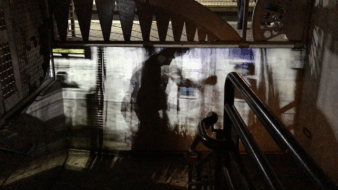
video installation on a public metro staircase, New Town Art, Pasadena, USA, HD Video, 16:9, colour, 2017, 2′ 21”
Installation/Projection was a part of Vladimir’s Underpants, an exhibition in public stairwells of Old Pasadena, Newtown Arts, Pasadena, USA on October 28, 2017.
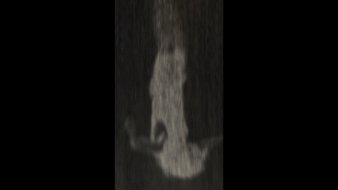
loop for video installation, USA, HD Video, 16:9, colour, 2020, 4′ 20”
Video meditation created in isolation during a pandemic. For years, the artist has been recording and archiving video and audio material with ideas she later articulated and edited into videos, films, and installations. The video is designed for vertical projection and is the first of a series of works emerging in an atmosphere of global health crisis and social distancing.
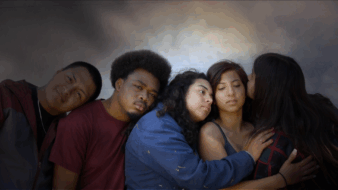
SPY-Safe Place for Youth, USA, HD Video, 16:9, colour, 2015, 3′ 43”
Reposition is a group video portrait of five members currently involved in Venice YouthBuild, a program providing education and job training to out-of-school and out-of-work youth to help them reposition into successful adulthoods. The video was produced in collaboration with The Mirror Mirror Project.
The video belongs to a series of “migrating frames” – short videos that do not have a narrative structure. The artist says of them that “they come from spontaneous recordings of things and events in my surroundings. They are made on the spot, in everyday life, when an idea is born out of real-life circumstances. Like haiku poetry, haiku videos are based on direct observations of objects or incidents, which I then edit and complete into meaningful wholes.”
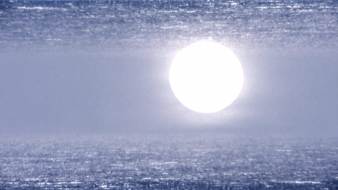
USA, HD Video, 16:9, colour, 2022, 1′ 10”
Haiku video from the Horizons series.
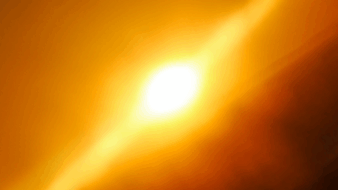
USA, HD Video, 16:9, colour, 2022, 1′ 28”
Haiku video from the Horizons series.

USA, HD Video, 16:9, colour, 2024, 1’ 20”
Haiku video from the Horizons series.
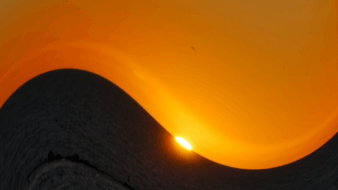
USA, HD Video, 16:9, colour, 2024, 1′ 54”
Haiku video from the Horizons series.
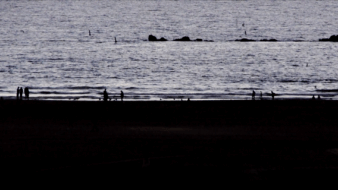
USA, HD Video, 16:9, colour, 2024, 1′ 38”
Haiku video from the Horizons series.
Between Body and Space IV: Black Waters
Tuesday, 3 June at 7 pm
The screening will be preceded by a lecture by Dr Maja Manojlović, media and film theorist and lecturer at the University of California, Los Angeles (UCLA).
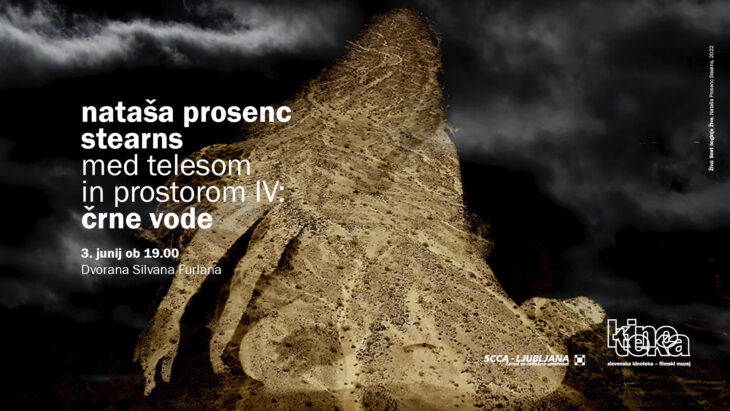
Maja Manojlović
Water-Becoming-Body: “Thinking With Water” in The Works of Nataša Prosenc Stearns
This presentation conceptualizes the notion of “thinking with water” as an aqua-sympoietic process of “making-with” water and “in the company of” many beings, elements, and things, as it figures in the work of visual artist and filmmaker Nataša Prosenc Stearns. I suggest that her aqua-sympoietic creative imaging processes transmute anthropocentrically structured sensorium, perception, and sense-making. Aqua-sympoiesis thus highlights multilayered, ecologically accentuated sensory experiences that expand and modify our sensory-perceptual field, which I call eco-aisthesis. Eco-aisthesis describes experiences that include natural elements and elemental forces but at the same time are outside the established anthropocentric sensory-perceptual patterns. If eco-aisthesis still alludes to human experience, elemental sensorium eludes it completely. These nuances of feeling are detached from our field of experience. However, their ever-elusive sensation is nonetheless felt. Prosenc Stearns thus creates alternative models of experiential potentials that offer planetary perspectives and experiences of inclusion and interconnectedness that are, like water, “always becoming, always different.”
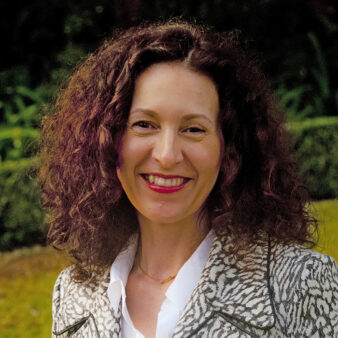 Dr Maja Manojlović‘s jacademic background is in Cinema and Media Studies, specializing in phenomenology, aesthetics, and cultures of digital film and emerging media. She has published in digital aesthetics, 3-D cinema, and documentary film and presented her work at international conferences. Recently, she published articles on “Essentials of Videogame Rhetoric and Design” and “Feeling A Life: Sympoietic Aesthetics in Honeyland.” She is currently writing on eco-aesthetics and the posthuman in Slovenian experimental films. Dr. Manojlović’s research also focuses on multimodality and mindfulness in writing pedagogy and aesthetics in XR (VR, AR, MR) environments. She conceptualized experiences such as Tongva VR/AR, Scribe VR, and Reconnect! The Amazon Medicine Garden. She teaches at the UCLA Writing Programs and Santa Monica College Department of Communication and Media Studies. She is also a co-founder of the UCLA XR Initiative and an affiliate faculty member of the UCLA Laboratory for Environmental Narrative Strategies (LENS). (Photo: Lem Thomas)
Dr Maja Manojlović‘s jacademic background is in Cinema and Media Studies, specializing in phenomenology, aesthetics, and cultures of digital film and emerging media. She has published in digital aesthetics, 3-D cinema, and documentary film and presented her work at international conferences. Recently, she published articles on “Essentials of Videogame Rhetoric and Design” and “Feeling A Life: Sympoietic Aesthetics in Honeyland.” She is currently writing on eco-aesthetics and the posthuman in Slovenian experimental films. Dr. Manojlović’s research also focuses on multimodality and mindfulness in writing pedagogy and aesthetics in XR (VR, AR, MR) environments. She conceptualized experiences such as Tongva VR/AR, Scribe VR, and Reconnect! The Amazon Medicine Garden. She teaches at the UCLA Writing Programs and Santa Monica College Department of Communication and Media Studies. She is also a co-founder of the UCLA XR Initiative and an affiliate faculty member of the UCLA Laboratory for Environmental Narrative Strategies (LENS). (Photo: Lem Thomas)
Between Body and Space IV: Black Waters
Water is one of the central motifs in Nataša Prosenc Stearns’ work. Due to its turbidity, it is an element of abstraction that fills human silhouettes with elemental materiality.
Gaston Bachelard, who wrote studies on all four basic elements, saw water as one of the key elements by which “we disobjectify objects, deform forms”, thus arriving at the substance beneath the object. Water is also the primary element of reflection and, consequently, of the layering of images. In water, images of depth and surface come together, overlapping each other and thus acquiring metaphorical power. One of the key post-production processes of Nataša Prosenc Stearns is the process of amalgamation, where layers of images not only overlap but also influence each other, become contained in each other and visible in each other.
Most of the works in this series have been conceived in the context of spatial video installations linked to gallery and non-gallery spaces. Quite a few of the works live a double life, gallery and film, showing the differences in the context of the two media, but also in the different gallery installations of the same project; for example, the texture and material of the wall on which the image is projected to inscribe itself into it, making it ripple like the reflective surface of the water, thus becoming another layer of the image.
Some of her works have also been created in other contexts, for example, on the theatre stage, such as the opera code L, in which she collaborated with her long-time collaborator, the composer Milko Lazar. Here, the artist used excerpts from other works (Caryatids and Hotel Diary) and a layering technique using movable semi-transparent screens on which images from four projectors were combined, replacing the classical set design. As the images seeped through the screens, combinations that were impossible to predict appeared, creating visually complex, layered abstract images typical of the work of Nataša Prosenc Stearns.
Robert Kuret
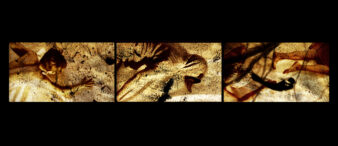
USA / Slovenia, 2018, HD video, 16:9, colour, 2′ 5”
Human bodies are in motion, reminiscent of reptiles. They follow each other in a familiar rhythm that connects them and, at the same time, blends them into their environment.
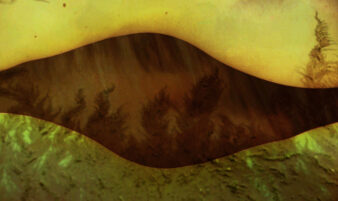
USA, 2016, HD video, 16:9, colour, 2′ 10”
The works in the Black Waters and Other Stories series are moving collages based on the layering of images. They create a world that is not anthropocentric but integrates the human body into an environment constantly expanding, contracting, and changing. The works depict states of constant emergence, the integrity of the body breaking down, establishing new connections with the environment and suggesting new possibilities of regeneration. The works in this series include Bridge, Applause, Knot and Sunset.
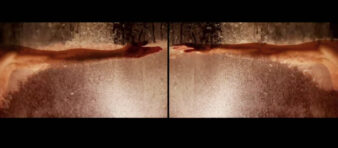
USA, 2016, HD video, 16:9, colour, 2′
The works in the Black Waters and Other Stories series are moving collages based on the layering of images. They create a world that is not anthropocentric but integrates the human body into an environment constantly expanding, contracting, and changing. The works depict states of constant emergence, the integrity of the body breaking down, establishing new connections with the environment and suggesting new possibilities of regeneration. The works in this series include Bridge, Applause, Knot and Sunset.
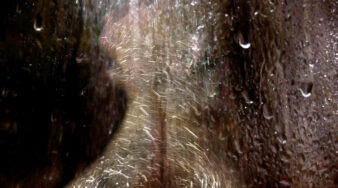
USA, 2016, HD video, 16:9, colour, 1′
The works in the Black Waters and Other Stories series are moving collages based on the layering of images. They create a world that is not anthropocentric but integrates the human body into an environment constantly expanding, contracting, and changing. The works depict states of constant emergence, the integrity of the body breaking down, establishing new connections with the environment and suggesting new possibilities of regeneration. The works in this series include Bridge, Applause, Knot and Sunset.
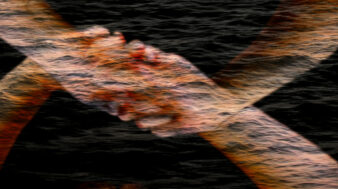
USA, 2016, HD video, 16:9, colour, 3′
The works in the Black Waters and Other Stories series are moving collages based on the layering of images. They create a world that is not anthropocentric but integrates the human body into an environment constantly expanding, contracting, and changing. The works depict states of constant emergence, the integrity of the body breaking down, establishing new connections with the environment and suggesting new possibilities of regeneration. The works in this series include Bridge, Applause, Knot and Sunset.
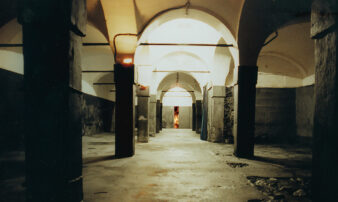
Slovenia, 1998, Betacam video, 3:4, colour, 1′ 39”
Interweaving images of shadows of naked bodies in the shape of a column.
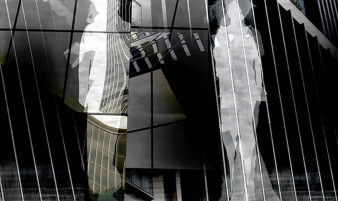
USA, 2017–2024, HD video, 16:9, colour, 2′ 6”
The video brings the idea of caryatids into the present day with silhouettes of women intertwined with elements of contemporary Los Angeles architecture.
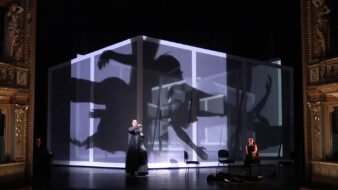
USA / Slovenia, 2019, HD video, 16:9, colour, 4’
Inspired by Roland Barthes’ book A Lover’s Discourse: Fragments, the opera consists of several arias and choruses. The visual part, created by Nataša Prosenc Stearns, consists of four simultaneous video projections on moving translucent screens.
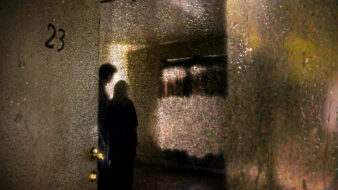
USA, 2016, HD video, 16:9, colour, 6′
A long-forgotten encounter comes alive with fragments of real and imagined memories—a chronicle of a relationship inside an abandoned hotel in Los Angeles.
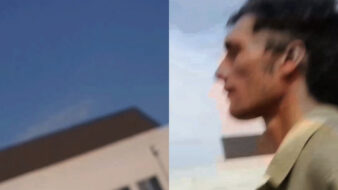
USA, 2014, HD video, 16:9, colour, 2′
The film was created for the Safe Place for Youth charity event at the Santa Monica Museum of Art in April 2014, where artists and young people from the centre paired up to create portraits of each other.
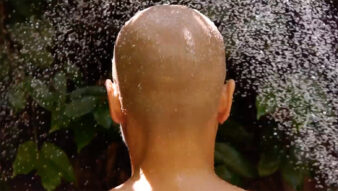
USA, 2015, HD video, 16:9, colour, 4′
Some images have such a strong associative meaning that it is almost impossible to see them independently. A shaved woman’s head is certainly one of them.
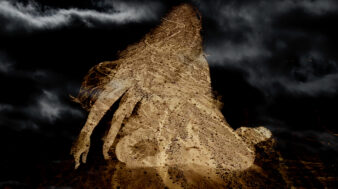
USA / Slovenia, 2022, HD video, 16:9, colour, 10′,
courtesy of Gorenjski muzej/Prešernova hiša Kranj
The Slovenian national epic The Baptism at the Savica (1836) by France Prešeren inspired the film. Živa was the pagan goddess of love and prosperity. The film presents the transformations of the goddess through her relationship with nature, the elements and historical events.
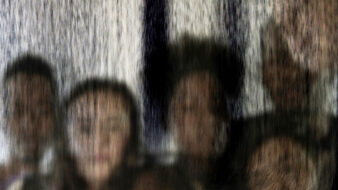
USA, 2022, HD video, 16:9, colour, 5′
An accident cuts into a group of individuals. As they watch the event, their reality turns into a nightmare.
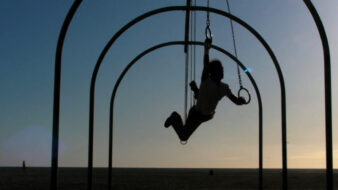
USA, 2019–2023, HD video, 16:9, colour, 3′
A snapshot of Venice Beach, California.
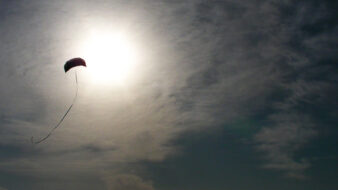
USA, 2018, HD video, 16:9, colour, 2′
Haiku video from the Against the Sun series.
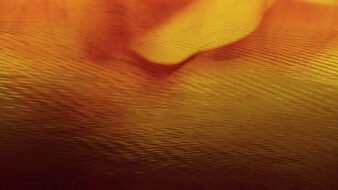
USA, 2016, HD video, 16:9, colour, 2′
The works in the Black Waters and Other Stories series are moving collages based on the layering of images. They create a world that is not anthropocentric but integrates the human body into an environment constantly expanding, contracting, and changing. The works depict states of constant emergence, the integrity of the body breaking down, establishing new connections with the environment and suggesting new possibilities of regeneration. The works in this series include Bridge, Applause, Knot and Sunset.
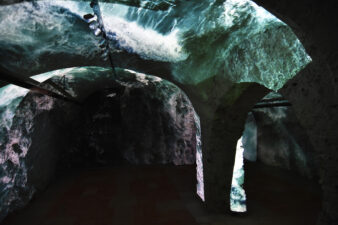
Slovenia / USA, 2001–2022, Betacam video, 3:4, colour, 4′
An installation inspired by the stories of female characters in Prešeren’s poetry.
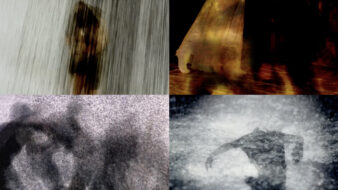
USA, 2022, HD video, 16:9, colour, 3′
Quartet is a collection of videos that are often referred to – literally – as moving pictures for their aesthetic sense.
Between Body and Space IV: Black Waters
3 – 10 June
» View at Slovenian Film Database (BSF)
The fourth programme of the review of Nataša Prosenc Stearns’ film/video oeuvre continues the third strand, focusing even more on her gallery works or installations and thus revealing the archiving of gallery works. This gives us further insight into the artist’s work in the installation field, both in a gallery context and in a theatre context, where the installation becomes the set design for the opera code L, where she combined different images on translucent screens. At the same time, there will also be some works that emerge from the gallery installation but also live on as video/film, such as Crawlers, Emergent Fossils or Dreamscape #1: Lovers, as well as works such as Suspended Colonnade, where the line between the two forms is further blurred.
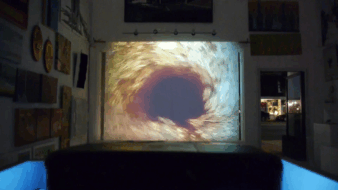
screening documentation, Wallspace, Los Angeles, USA, HD Video, 16:9, colour, 2013, 4′ 21”
Detail from the four-channel video installation Gladiators. A series of images of fire, earth, sand, and snow rotating and disappearing in a circular motion.
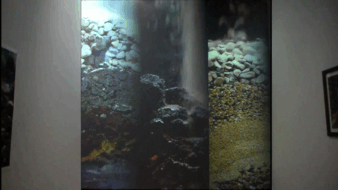
video installation, ECC, Maribor Castle, Maribor Regional Museum, Slovenia, HD Video, 16:9, colour, 2012, 3′ 27”
Capital of Culture Maribor art events in the bastion of the Maribor Regional Museum. The video installation is a reflection of a new historical space. The artist brought the entire space to life with three parallel projections of falling stones, earth, and gravel. The artist was led to earth materials by reflecting on the history of medieval construction. Still, she has made a work in which layers of history come poetically to life as avalanches of geological debris.
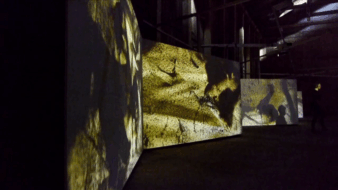
video installation, Monfort Gallery, Portorož / Piran Coastal Galleries, Portal Maribor, Slovenia, HD Video, 16:9, colour, 2016, 2′ 49”
A video made especially for the installation, first installed in the Monfort exhibition space in Portorož, with scenes of human bodies in motion, reminiscent of reptiles. They follow each other in a familiar rhythm that connects them and, at the same time, blends them into the environment. The images are partly abstracted: the bodies and the background are flattened into a single moving structure. Similar to the artist’s other projects in recent years, which focus on authentic experiences of physical existence, test the limits of the body’s capacities and offer the possibility of the body’s supernatural abilities, this installation is a response to the growing anxiety and loneliness caused by retreating into disembodied cyberspace. In the spirit of the belief that most of the answers are hidden precisely in our bodies’ sensations, vibrations, pleasures and pains, these works struggle for the survival of the felt, the authentic and the mysterious.
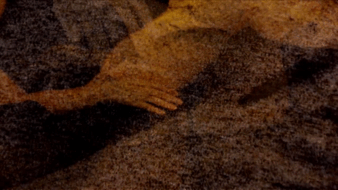
video installation loop, USA, Novo Celje Mansion, HD Video, 16:9, colour, 2016, 8′
Video is a part of Black Waters and Other Stories series – short videos with no narrative structure.
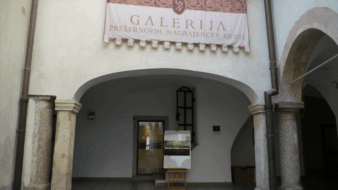
exhibition documentation, Prešeren Award Winners of Fine Arts Gallery, Kranj, Slovenia, HD Video, 16:9, colour, 2016, 5′ 11”
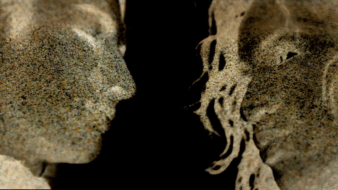
USA, HD Video, 16:9, colour, 2019, 7’ 23”
Dreamscape #1 – Lovers is a moving collage which integrates the human body with the organic world. The process of layering connects visual elements and leads to fragments of narration. Inspired by A Lover’s Discourse: Fragments by Roland Barthes, the video ploughs into the elusive substance of fantasies and dreams of lovers—music from the opera code L by Milko Lazar.
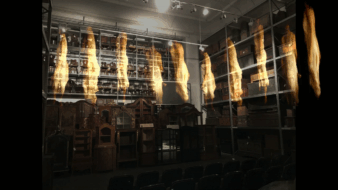
video installation, Maribor Regional Museum, Slovenia, HD Video, 16:9, colour, 2018, 2′ 27”
The video shows a floating female figure, multiplied in numerous variations, creating repetitions of her own image in the rhythm of colonnades. Artistically, the image avoids banality through a transition from a specific figural appearance into abstraction and back again. It resembles the colonnades of Antiquity, while the switching of the internal space into external space in the video brings to mind the colonnade designed by the architect Jože Plečnik around the sadly never realised Cathedral of Freedom.
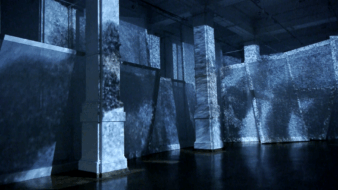
video installation, Kibela, Maribor, Slovenia, HD Video, 16:9, colour, 2019, 1′ 59”
code L – Fragments is a video installation created by two synchronized projections onto transparent screens. They integrate shadows and silhouettes of visitors and reflections of the architectural elements into the body of the installation. What emerges is a space-inside-of-space into which the visitors enter. According to the curator Peter Tomaž Dobrila, “The artist used to place humans at the centre of the natural environment in her earlier works, reappropriating the image of the human body by emphasizing certain parts, such as eyes. In her recent works, however, the human figure blends with the environment; it becomes a body-shadow, moving across the given ambience. The internalization of this relationship unravels the corporeality, unlocks the interior, and highlights the intimacy of the experience. The figures are abstracted into ephemeral creatures, who transcend into eternity of existence and offer the viewer a space for reflection.”
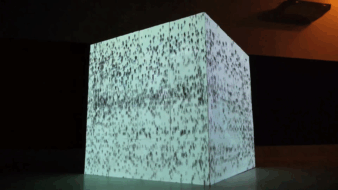
video installation, Kresija Gallery, Ljubljana, Slovenia, Armory Center for the Arts, Los Angeles, USA, HD Video, 16:9, colour, 2014, 2′ 10”
The video installation consists of projections of stylised human figures onto the sugar cube (2 x 2 x 2 m). Although sugar has been tarnished recently for health reasons, it has played an important role in history. It has been as important a commodity as oil is today, shaping world geopolitics and the economies of the most critical countries wherever sugar cane thrives.
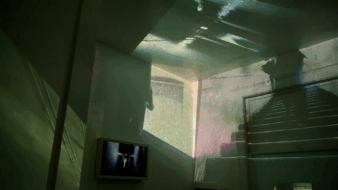
video installation, Velenje Gallery / Galerija Božidar Jakac Gallery / The Rendon Gallery / Strada Los Angeles, Velenje / Kostanjevica na Krki / Los Angeles, Slovenia / USA, HD Video, 16:9, colour, 2016 / 2018 / 2020-, 4′ 29”
A video installation of a series of videos entitled Hotel Diary was displayed together with a Golden Curtain video installation at the exhibition at Velenje Gallery in 2016. Videos were recorded with a static camera in an abandoned hotel in Los Angeles to capture the atmosphere of memories and stories. It is a part of a series of videos entitled.
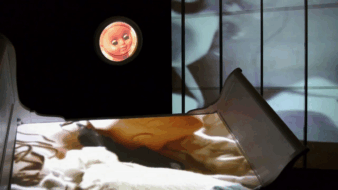
Kanalya Pictures, video installation, Phantom Galleries / LACMA (Tarfest) / Wallspace Gallery / SCCA Project Room, Los Angeles / Ljubljana, HD Video, 16:9, colour, ZDA / Slovenia, 2008 / 2010 / 2012 / 2013, 2′
Video is a documentation of the same-named exhibition – installation, where two looped videos are projected on a gallery window and a bed. The rolling dolls with perky plastic cheeks and the soft, sad-eyed plush pets in this installation invoke a deeply buried nostalgia for the loss of an affective sense of materiality that is, paradoxically, generated by the post-industrial hyper-production of “things.” As our environment is cluttered with an unprecedented excess of material objects, our culture witnesses a steadily dissolving ability to infuse these objects with emotion. It is this emotional investment that animates our relationship with objects and with materiality as such.
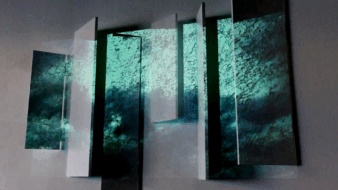
video object, MF Gallery, Los Angeles, USA, HD Video, 16:9, colour, 2017 / 2024, 1′ 52”
Trees of Savannah, water, stream, wind. Part of a series of five video objects with the common title Parallax.
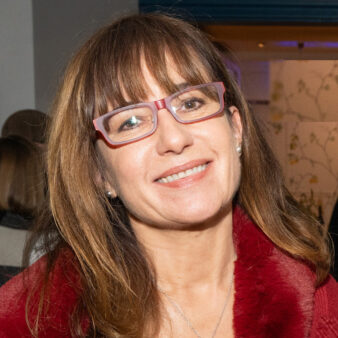 Visual artist and filmmaker Nataša Prosenc Stearns (1966) earned her BA at the Academy of Fine Arts and Design in Ljubljana. She moved to Los Angeles on a Fulbright Grant for her MFA at California Institute of the Arts. Her body of work ranges from single-channel videos, video installations, short and feature films to photo-collage prints. She explores innovative strategies in storytelling and visual expression and is known for creative use of non-gallery spaces and large multi-channel installations. Her areas of artistic exploration include alienation and identity, movement and metamorphosis. Transition is organic to her own life, as she has been crossing the Atlantic Ocean from her home in Slovenia to her other home in the United States for the last 25 years. The various abstractions of the body imply a struggle against masculinist presuppositions, orders, and hierarchies. She has developed a visual language that integrates seemingly unrelated spaces and figures. This allows her to address another of her chosen topics – the interconnectedness and unity of all things. Her works seek wholeness or fusion, a personal and social identity, that never seems entirely settled, never completely finished.
Visual artist and filmmaker Nataša Prosenc Stearns (1966) earned her BA at the Academy of Fine Arts and Design in Ljubljana. She moved to Los Angeles on a Fulbright Grant for her MFA at California Institute of the Arts. Her body of work ranges from single-channel videos, video installations, short and feature films to photo-collage prints. She explores innovative strategies in storytelling and visual expression and is known for creative use of non-gallery spaces and large multi-channel installations. Her areas of artistic exploration include alienation and identity, movement and metamorphosis. Transition is organic to her own life, as she has been crossing the Atlantic Ocean from her home in Slovenia to her other home in the United States for the last 25 years. The various abstractions of the body imply a struggle against masculinist presuppositions, orders, and hierarchies. She has developed a visual language that integrates seemingly unrelated spaces and figures. This allows her to address another of her chosen topics – the interconnectedness and unity of all things. Her works seek wholeness or fusion, a personal and social identity, that never seems entirely settled, never completely finished.
Her work has been shown internationally, including at the Venice Biennale, the Douloun Museum of Art in Shanghai, ARCO Fair Madrid, Tel Aviv Museum of Art, Circulo de Bellas Artes, Madrid, and others. Her videos and films have been screened at SXSW, Films de femmes Paris, AVIFF Cannes, Brooklyn Film Festival, Chicago Independent Film Festival, Pacific Film Archives Berkeley, RedCat at Disney Music Hall in Los Angeles and other venues. She is a recipient of The Soros Grant, The Durfee Grant and The Prešeren Fund Award – the Slovenian award for outstanding achievement in art. Her videos are also featured in the contemporary opera code L by composer Milko Lazar, who is also the composer of the music for several of her works.
Between Body and Space I: Vortex
21 March 2025, photo: Matjaž Rušt
Between Body and Space II: Process
1 April 2025, photo: SCCA-Ljubljana archive
Between Body and Space III: Vertical Horizon
17 May 2025, V-F-X Ljubljana festival, photo: Asiana Jurca Avci
Between Body and Space IV: Black Waters
3 June 2025, photo: SCCA-Ljubljana archive
Curators: Vesna Bukovec, Robert Kuret
Co-production: SCCA-Ljubljana/DIVA Station and Slovenian Cinematheque
Partner: Slovenian Film Database (BSF)
Supported by: Ministry of Culture of the Republic of Slovenia, City of Ljubljana – Department of Culture
Thanks: Maja Manojlović, Rok Omahen, RTV Slovenia, Slovenian Film Archive, Slovenian Film Centre, Slovenian Film Database
![]()
![]()
![]()
![]()
![]()
![]()


